Advances in Pure Mathematics
Vol.3 No.3(2013), Article ID:31411,6 pages DOI:10.4236/apm.2013.33051
Chaotic Properties on Time Varying Map and Its Set Valued Extension
1Department of Mathematics, Zakir Hussain College, University of Delhi, Delhi, India
2Department of Mathematics and Statistics, Ramjas College, University of Delhi, Delhi, India
Email: *pkumar@ramjas.du.ac.in
Copyright © 2013 Ayub Khan, Praveen Kumar. This is an open access article distributed under the Creative Commons Attribution License, which permits unrestricted use, distribution, and reproduction in any medium, provided the original work is properly cited.
Received December 27, 2012; revised January 30, 2013; accepted February 28, 2013
Keywords: Transitivity; Sensitivity; Topological Mixing; Weak Mixing; Nonautonomous Dynamical System
ABSTRACT
Every autonomous dynamical system 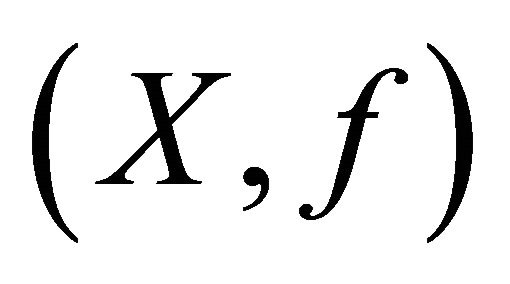 induces a set-valued dynamical system
induces a set-valued dynamical system  on the space of compact subsets of X. In this paper we have investigated some chaotic relations between a nonautonomous dynamical system and its set valued extension.
on the space of compact subsets of X. In this paper we have investigated some chaotic relations between a nonautonomous dynamical system and its set valued extension.
1. Introduction
There are two main types of dynamical systems: differential equations and iterated maps(also called difference equation). Differential equation describes the continuous time evaluation of the system, whereas difference equation describes the discrete time evaluation of the system. Iterated maps are the tools for analyzing periodic and chaotic solution of differential equation. Again, there are two types of difference equation: autonomous and nonautonomous, called as autonomous and nonautonomous discrete dynamical system. During the past few decades, there has been increasing interest in the study of discrete dynamical system (or difference equation) of the form,
 (1)
(1)
where  is a map and
is a map and 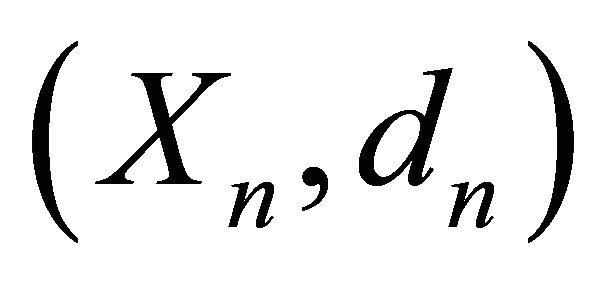 is a metric space or all
is a metric space or all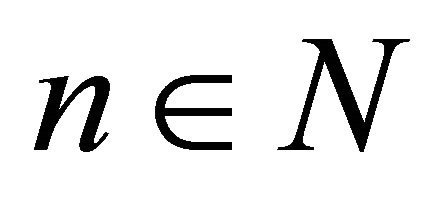 . In particular, if
. In particular, if 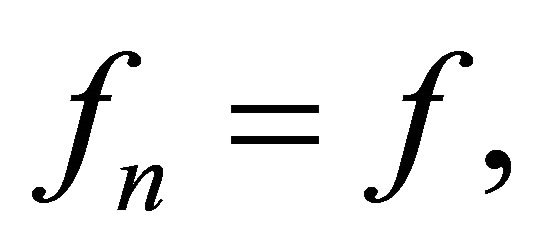
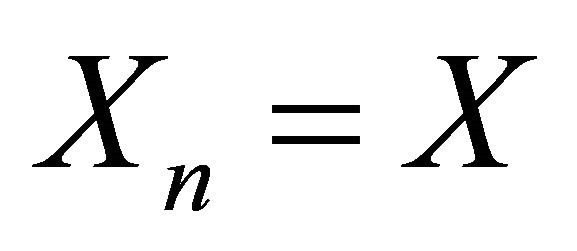 and
and 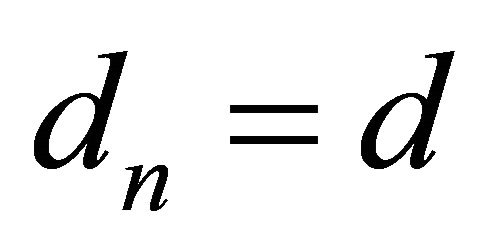 for all
for all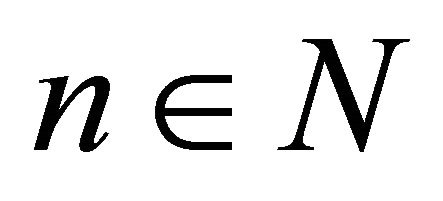 , then (1) reduces to,
, then (1) reduces to,
 (2)
(2)
where  is a map.
is a map.
The system (1) is called a nonautonomous discrete dynamical system, which is governed by the sequence of maps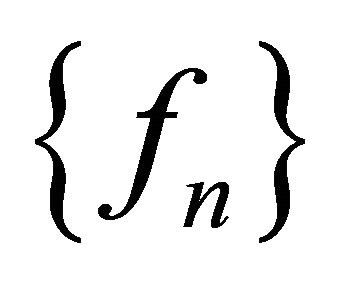 . While the dynamical system (2), governed by the single map f, called an autonomous discrete dynamical system.
. While the dynamical system (2), governed by the single map f, called an autonomous discrete dynamical system.
Chaos of system (2) or a time-invariant map  has been discussed thoroughly in [1-5]. However, evolutions of certain physical, biological, and economical complex systems are necessarily described by a nonautonomous systems whose dimensions vary with time in some cases. In [6], Chen and Tian study the chaos of system (1) (with
has been discussed thoroughly in [1-5]. However, evolutions of certain physical, biological, and economical complex systems are necessarily described by a nonautonomous systems whose dimensions vary with time in some cases. In [6], Chen and Tian study the chaos of system (1) (with 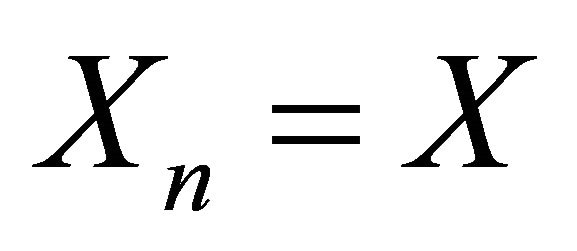 and
and 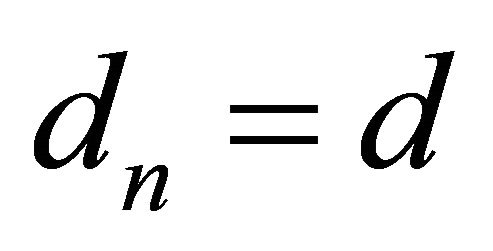 for all
for all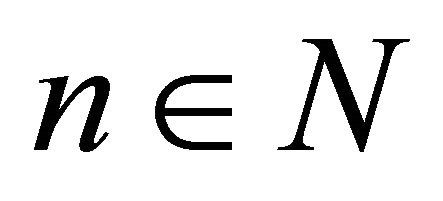 ) by introducing several new concepts. In 2009, Chen and Shi in [7] introduced some basic concepts, including chaos in the sense of Devaney, Wiggins and in a strong sense of Li-Yorke and studied their behavior under topological conjugacy. In [8], the author introduced a new type of subsystem of a nonautonomous discrete dynamical system, which is a partial compositions of a given sequence of maps(from which nonautonomous dynamical system is generated), and the concept of chaos in the strong sense of Wiggins is introduced. Also, some Li-Yorke and Wiggins chaotic connections (in the strong sense) between a given dynamical system and its subsystems have been studied.
) by introducing several new concepts. In 2009, Chen and Shi in [7] introduced some basic concepts, including chaos in the sense of Devaney, Wiggins and in a strong sense of Li-Yorke and studied their behavior under topological conjugacy. In [8], the author introduced a new type of subsystem of a nonautonomous discrete dynamical system, which is a partial compositions of a given sequence of maps(from which nonautonomous dynamical system is generated), and the concept of chaos in the strong sense of Wiggins is introduced. Also, some Li-Yorke and Wiggins chaotic connections (in the strong sense) between a given dynamical system and its subsystems have been studied.
The main task to investigate the dynamical system 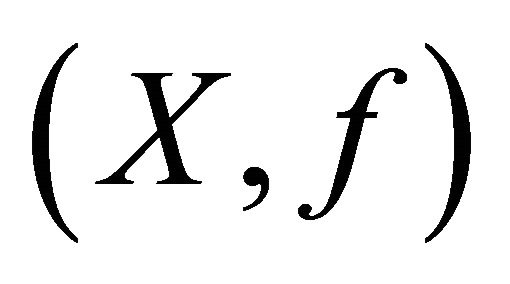 is, how the points of X move under the iterate of
is, how the points of X move under the iterate of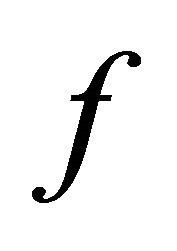 . Nevertheless, in many fields or problems such as biological species, demography, numerical simulation and attractors, etc, it is not enough to know only how the points of
. Nevertheless, in many fields or problems such as biological species, demography, numerical simulation and attractors, etc, it is not enough to know only how the points of 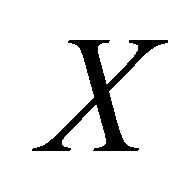 move, one should know how the subsets of
move, one should know how the subsets of  move. So it is also necessary to study the set valued dynamical system
move. So it is also necessary to study the set valued dynamical system 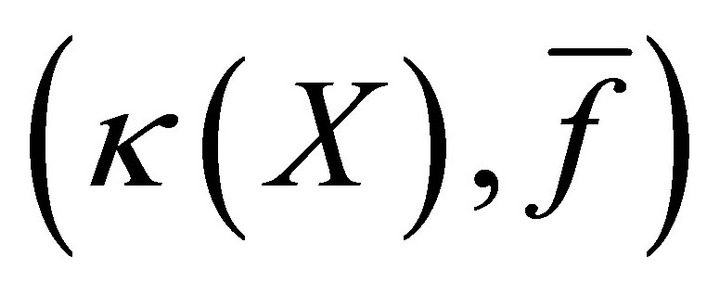 associated to the system
associated to the system
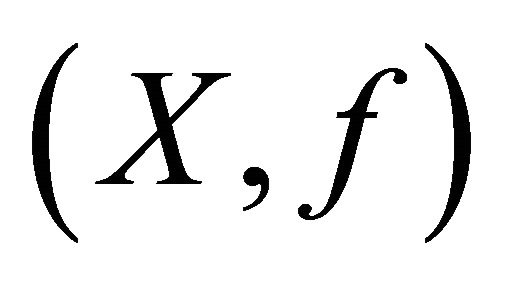 , where
, where  is a continuous map on a compact metric space
is a continuous map on a compact metric space 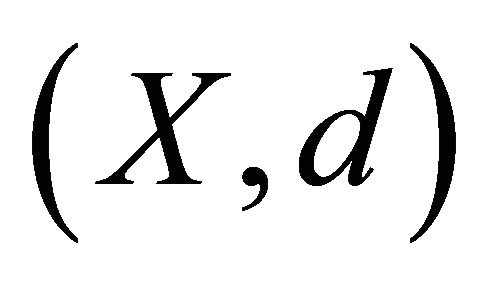 and
and 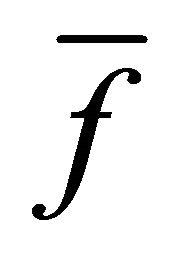 is a natural extension of
is a natural extension of  on
on 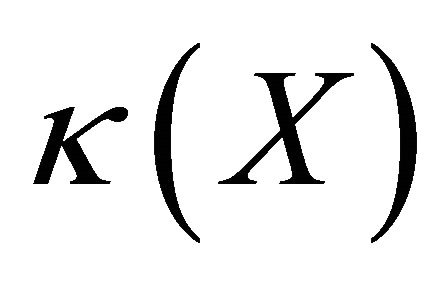 (collection of all non-empty compact subsets of
(collection of all non-empty compact subsets of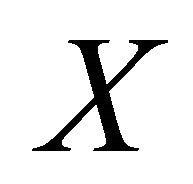 ). Many papers [9-13] has been devoted to the study of chaotic relation between autonomous system
). Many papers [9-13] has been devoted to the study of chaotic relation between autonomous system 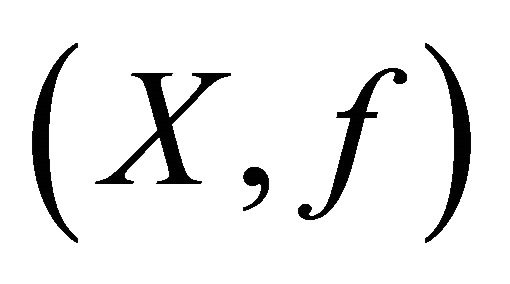 and its set valued extension
and its set valued extension
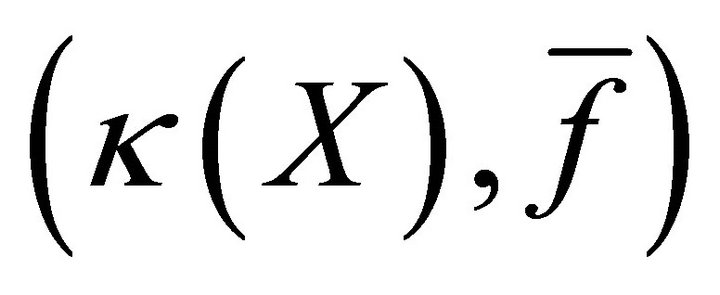 . Normally, we come across so many natural phenomena which explicitly depend on time where the starting point is just as important as the time elapsed. We would like to know what would be the collective dynamics of such system in relation to the individual dynamics. This paper is an endevour to investigate the relations between the individual dynamics and collective dynamics for time dependent discrete systems.
. Normally, we come across so many natural phenomena which explicitly depend on time where the starting point is just as important as the time elapsed. We would like to know what would be the collective dynamics of such system in relation to the individual dynamics. This paper is an endevour to investigate the relations between the individual dynamics and collective dynamics for time dependent discrete systems.
So, here we have considered the set-valued extension of a nonautonomous system (1), as
 (3)
(3)
where . It is clear that this system is governed by the sequence of maps
. It is clear that this system is governed by the sequence of maps  on setvalued extension of
on setvalued extension of , i.e.
, i.e. . So far, there is no investigation has been done on the chaotic relationship between systems (1) and (3).
. So far, there is no investigation has been done on the chaotic relationship between systems (1) and (3).
In present paper, we investigate the relation between 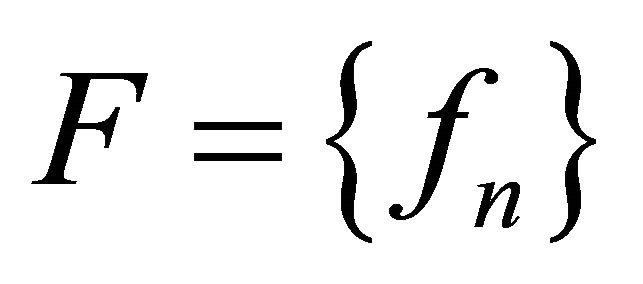 and
and 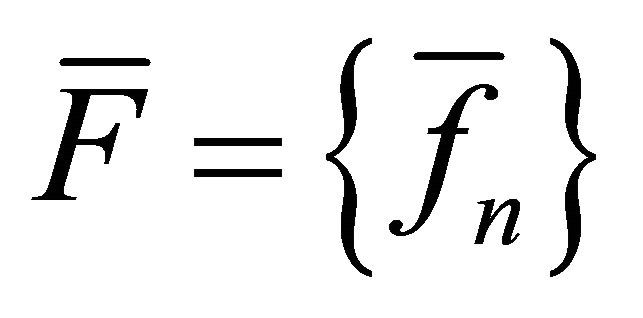 in the related chaotic dynamical properties such as transitivity, sensitivity, dense set of periodic points, weak mixing, mixing and topological exactness, with
in the related chaotic dynamical properties such as transitivity, sensitivity, dense set of periodic points, weak mixing, mixing and topological exactness, with 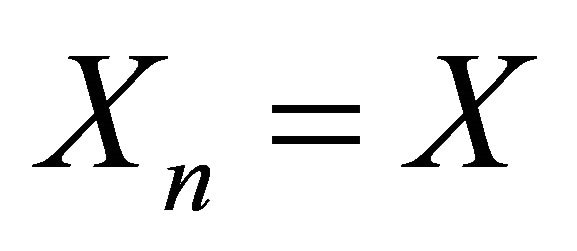 and
and 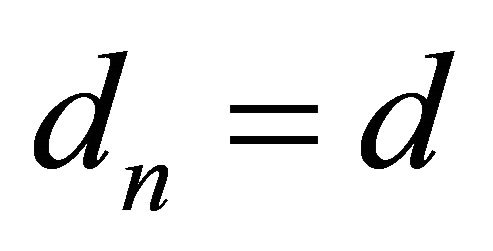 for all
for all 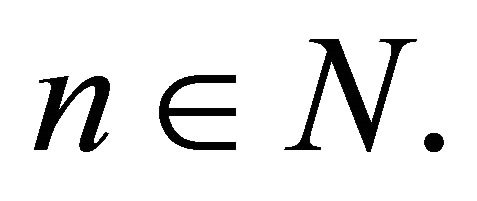
2. Basic Definition and Notation
Let  be a continuous self map on a compact metric space
be a continuous self map on a compact metric space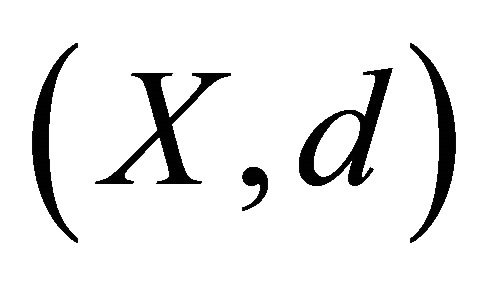 .
.
Definition 2.1 A map 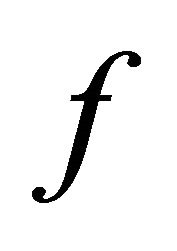 is said to be transitive if for every pair of open sets
is said to be transitive if for every pair of open sets  and
and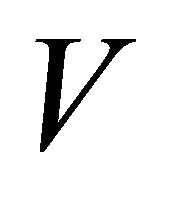 , there exists an
, there exists an 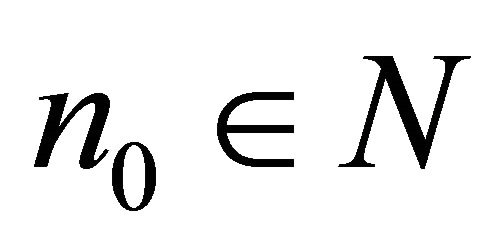 such that
such that .
.
Definition 2.2 A point 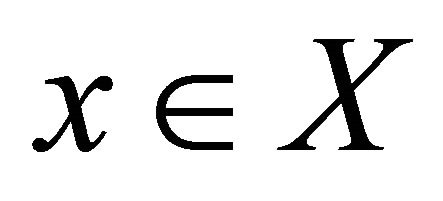 is said to be periodic if there exists
is said to be periodic if there exists 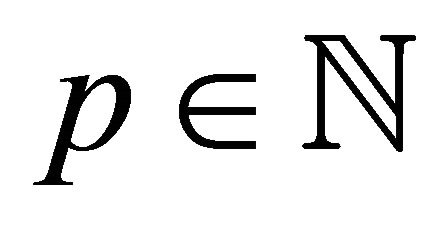 such that
such that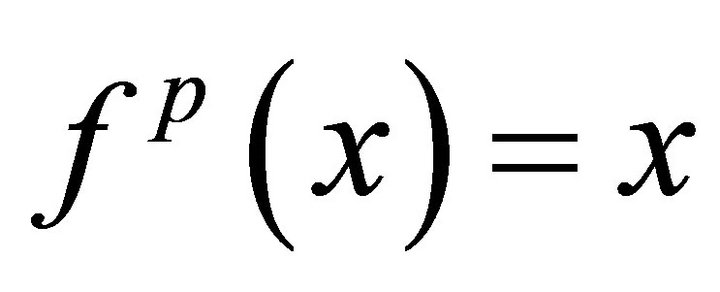 . The least such
. The least such ![]() is called the period(prime period) of the point
is called the period(prime period) of the point![]() .
.
Definition 2.3 f is said to have sensitive dependence on initial conditions (sensitive), if there exist  (sensitivity constant) such that for every point
(sensitivity constant) such that for every point 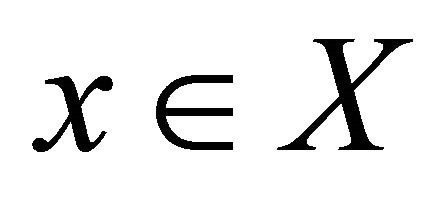 and for each
and for each 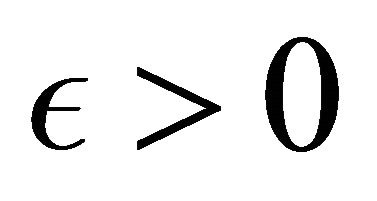 there is
there is 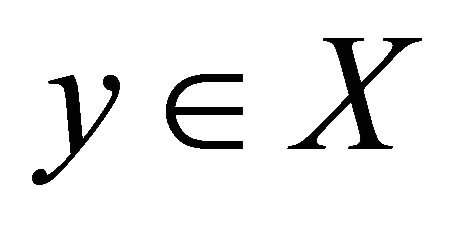 and
and 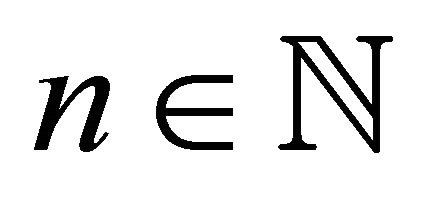 such that
such that 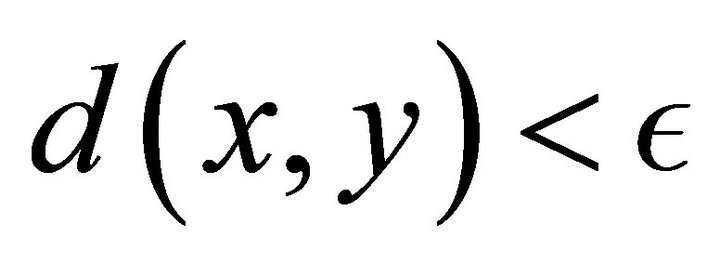 and
and 
A continuous map f is chaotic in the sense of Devaney (Devaney chaotic) if:
1) f is topological transitive;
2) f has dense set of periodic points;
3) f has sensitive dependence on initial conditions.
It is known that condition (1) together with (2) implies (3) on compact metric spaces, see [3]. Further, for interval maps it is known that transitivity alone implies chaos [2].
Definition 2.4 Map f is weakly mixing if for any pair of non-empty open sets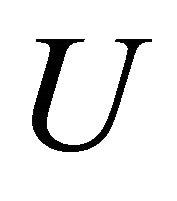 ,
, 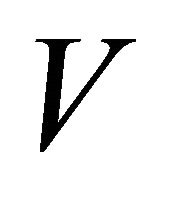 in
in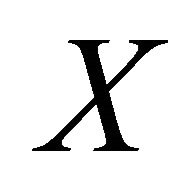 , there exists a positive integer k, such that
, there exists a positive integer k, such that  and
and .
.
Definition 2.5 f is topologically mixing(mixing) if for any pair of non-empty open sets U, V in X, there exists an integer 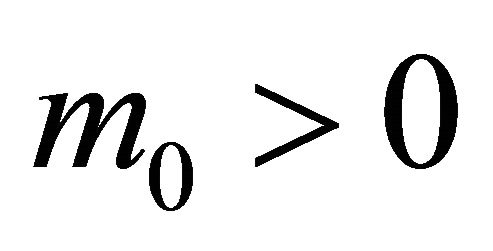 such that
such that , for all
, for all ![]()
 .
.
Definition 2.6 A map 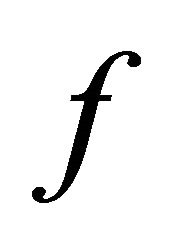 is topological exact or locally eventually onto(leo) if for any non empty open set
is topological exact or locally eventually onto(leo) if for any non empty open set 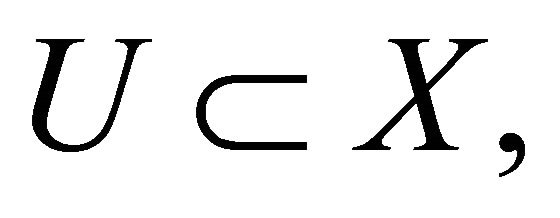 there exist an integer
there exist an integer 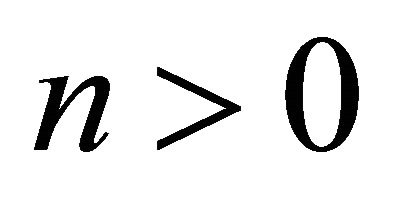 such that
such that 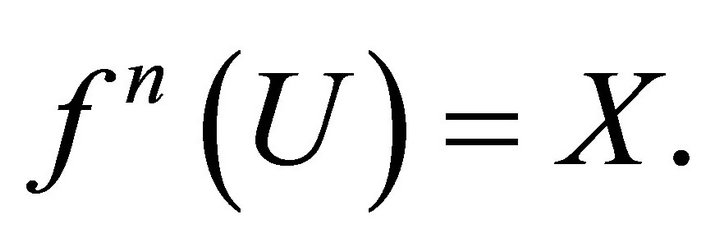
3. Set-Valued Extension
Define the hyperspace 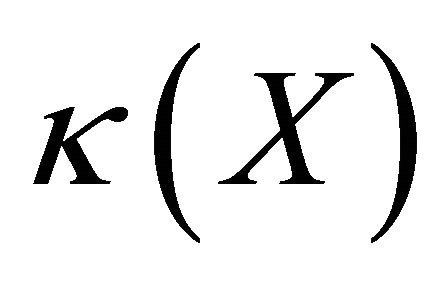 as the collection of all the non-empty compact subsets of
as the collection of all the non-empty compact subsets of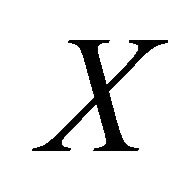 . If
. If 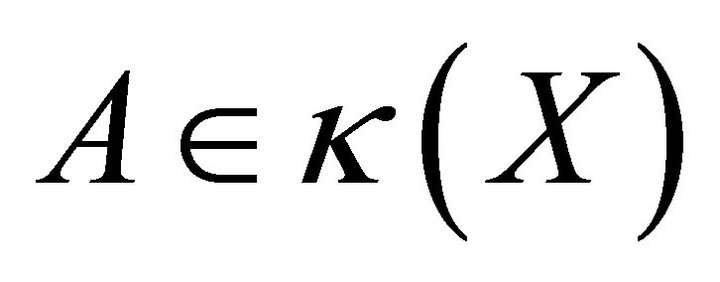 we define the
we define the 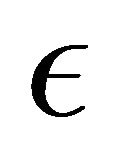 -neighbourhood of
-neighbourhood of 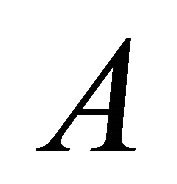 as the set
as the set
 where
where 
The Hausdorff metric on 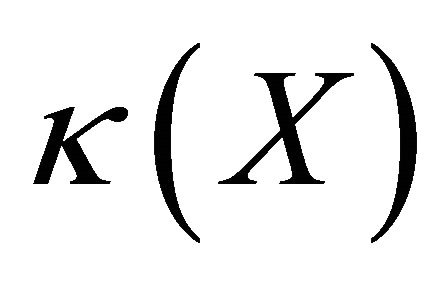 is defined as
is defined as

It is well known that 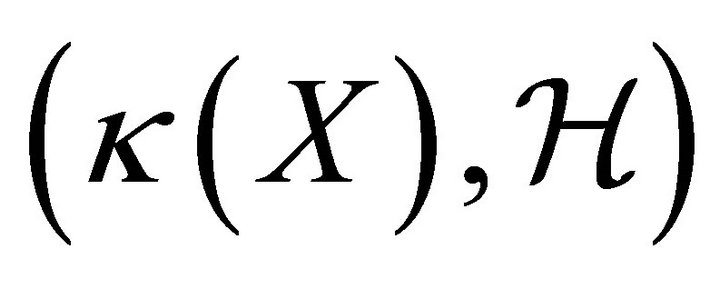 is a compact metric space, if
is a compact metric space, if 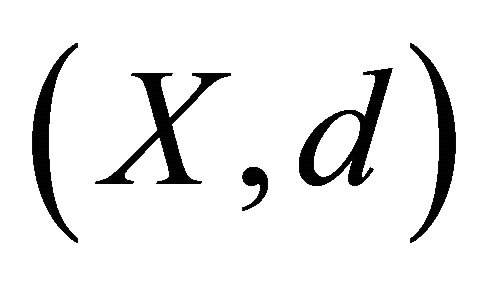 is a compact metric space.
is a compact metric space.
For any finite collection  of non empty subsets of
of non empty subsets of 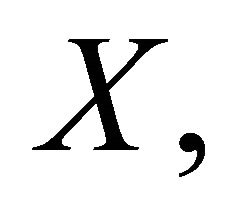 define
define
 (4)
(4)
Collection of these kind of sets form a base for the topology on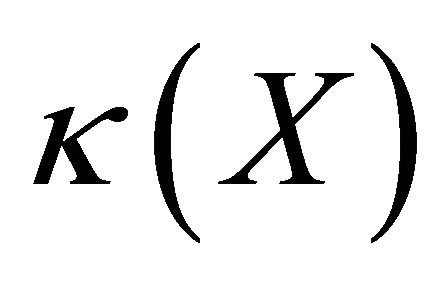 , called Vietoris topology (also called hit and miss topology [9] given by Leopold Vietoris). It is worth noting that if
, called Vietoris topology (also called hit and miss topology [9] given by Leopold Vietoris). It is worth noting that if 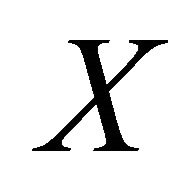 is a compact metric space then Hausdorff topology coincide with Vietoris topology.
is a compact metric space then Hausdorff topology coincide with Vietoris topology.
Let A be a subset of X. Define the extension of A to 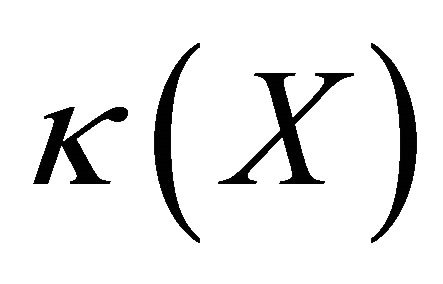 as,
as, .
.
Remark 3.1 [12] It is clear that 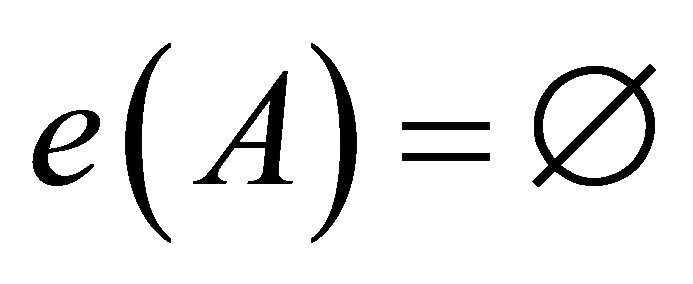 if and only if
if and only if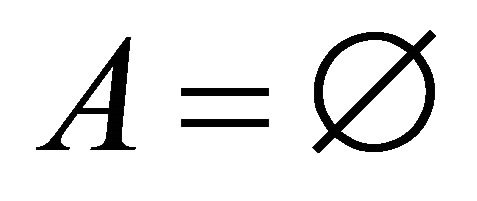 .
.
Result 3.2 [12] Let A be a non-empty open subset of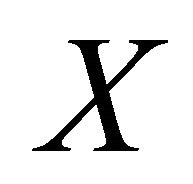 . Then
. Then 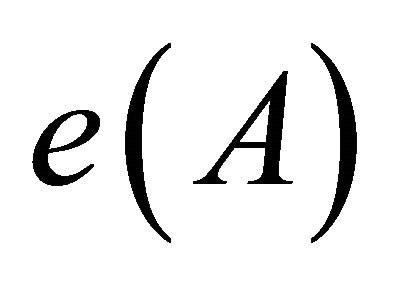 is a non-empty open subset of
is a non-empty open subset of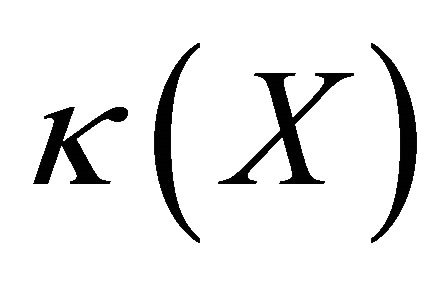 .
.
Result 3.3 [12] Let  and
and 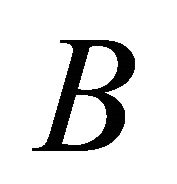 be two non-empty subset of
be two non-empty subset of 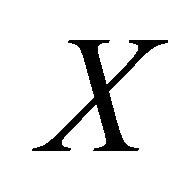 and
and  is continuous. Then1)
is continuous. Then1) 
2) 
3)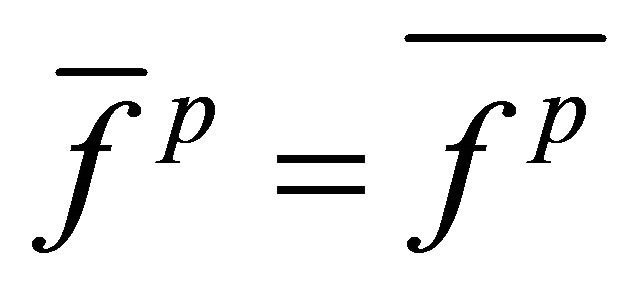 , for every
, for every 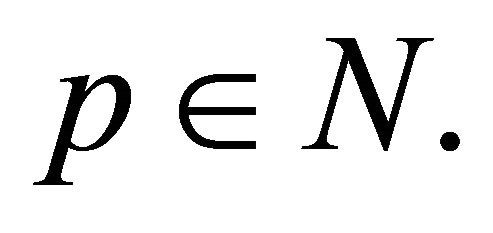
It has been proved that the collection 
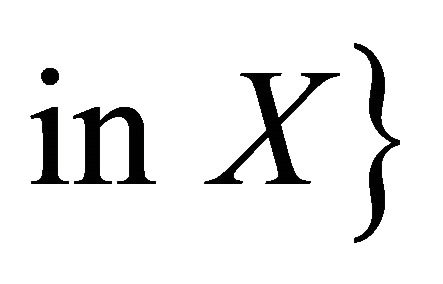 generate a topology on
generate a topology on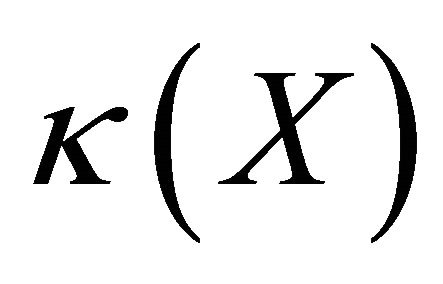 , called
, called  - topology(also called Upper Vietoris topology). So if
- topology(also called Upper Vietoris topology). So if 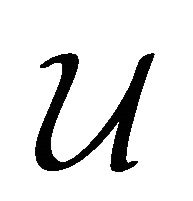 is any non-empty open set in
is any non-empty open set in 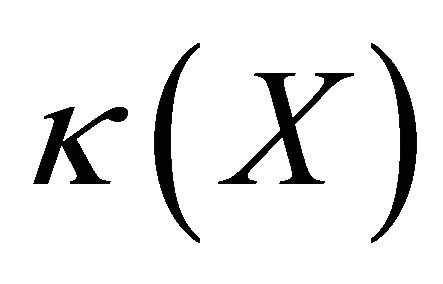 (with
(with 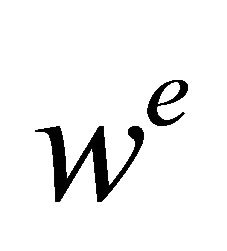 - topology) then by the above result, there exists non-empty open subsets
- topology) then by the above result, there exists non-empty open subsets 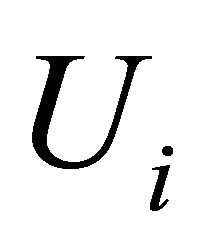 of
of 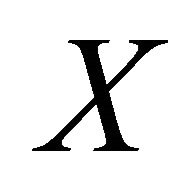 such that,
such that,![]() .
.
4. Dynamical Properties on Time-Varying Map
Let 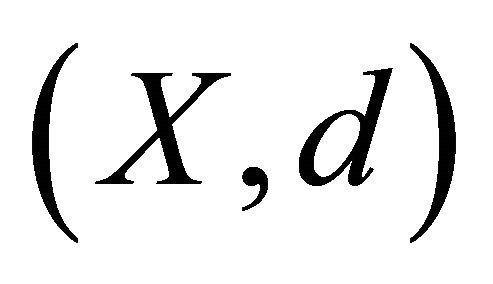 be a metric space and
be a metric space and  be a sequence of maps,
be a sequence of maps,  For a point
For a point 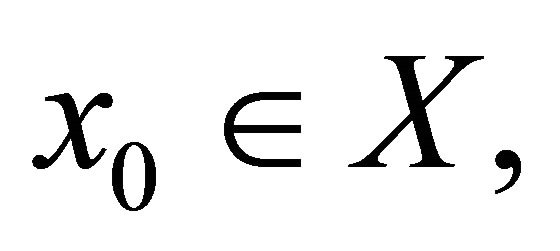 define a sequence as follows:
define a sequence as follows:

then the sequence ![]() is said to be an orbit of the sequence
is said to be an orbit of the sequence ![]() of the maps (starting at x0)
of the maps (starting at x0)
or an orbit of 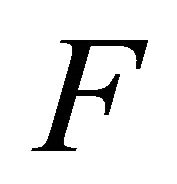 in the iterative way.
in the iterative way.
In addition, for any point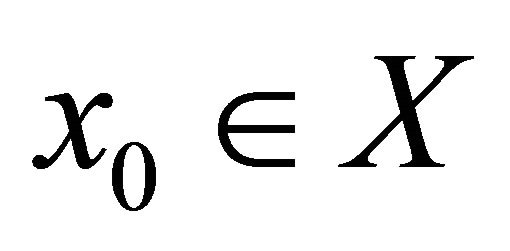 , define a sequence as follows:
, define a sequence as follows:

then, the sequence ![]() is said to be an orbit of the sequence
is said to be an orbit of the sequence ![]() of the maps (starting at x0)
of the maps (starting at x0)
or an orbit of 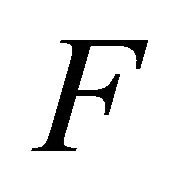 in the successive way.
in the successive way.
Now on for convenience, for any sequence
![]() of maps defined on a metric space
of maps defined on a metric space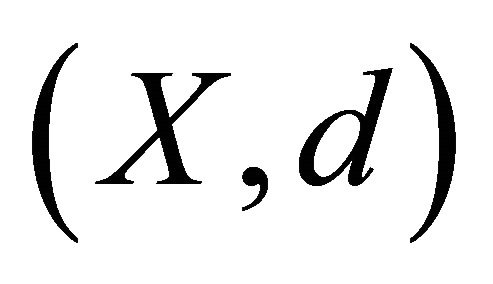 denote maps
denote maps  for any
for any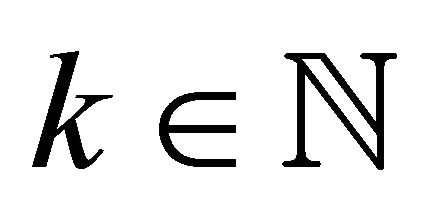 , by
, by

and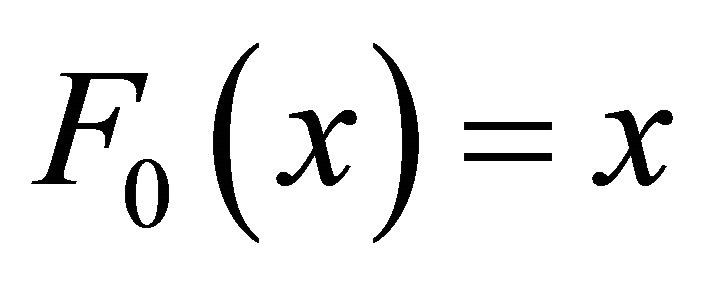 , for any
, for any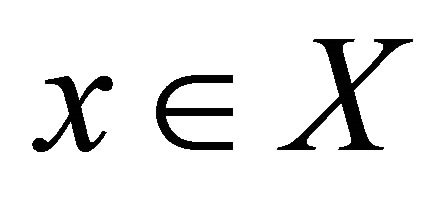 . It is obvious that any orbit
. It is obvious that any orbit ![]() of
of ![]() in the iterative way is an orbit
in the iterative way is an orbit ![]() of
of ![]() in the successive way.
in the successive way.
Definition 4.1 ![]() is said to be transitive in iterative(or successive) way if for every open set
is said to be transitive in iterative(or successive) way if for every open set  of
of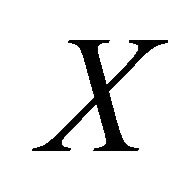 , there exists a positive integer
, there exists a positive integer 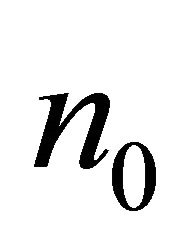 such that
such that  (or
(or ).
).
Definition 4.2 Let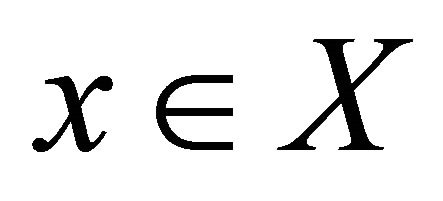 ,
, ![]() is said to be periodic in iterative(or successive) for
is said to be periodic in iterative(or successive) for![]() , if there exists a integer
, if there exists a integer 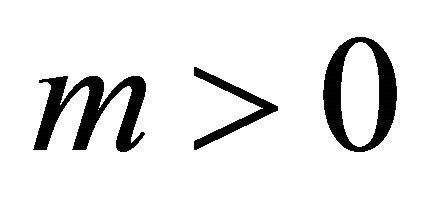 such that
such that  (or
(or 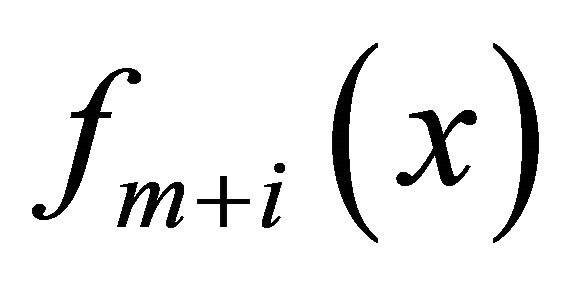
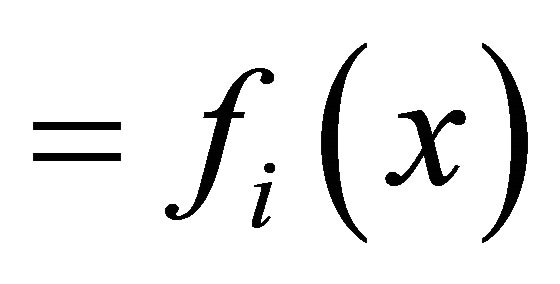 ) and for any interger
) and for any interger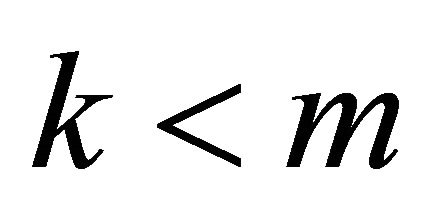 ,
,  (or
(or ).
).
Definition 4.3 If there exists a constant  such that for any point
such that for any point  and any
and any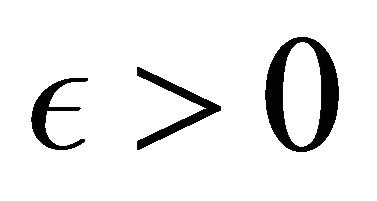 , the ball
, the ball 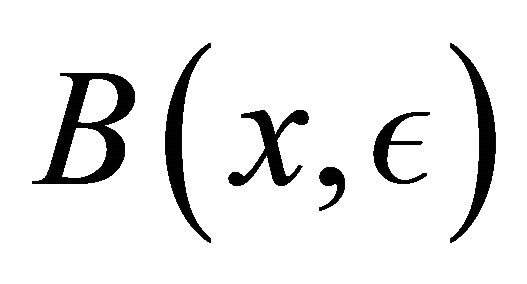 contains a point
contains a point ![]() and there exists a positive integer
and there exists a positive integer 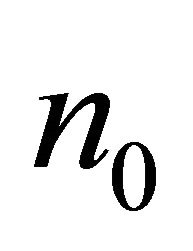 such that
such that  or
or
 , then the sequence
, then the sequence ![]()
of maps is said to be sensitive dependence on initial condition (on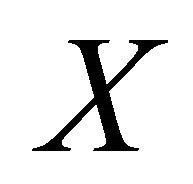 ) in the iterative or successive way.
) in the iterative or successive way.
The sequence ![]() of maps is said to be chaotic (on
of maps is said to be chaotic (on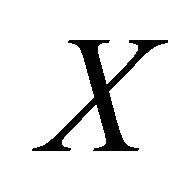 ) in the iterative(or successive) way, in the sense of Devaney, if 1) F is transitive (on X) in the iterative (or successive) way.
) in the iterative(or successive) way, in the sense of Devaney, if 1) F is transitive (on X) in the iterative (or successive) way.
2) The set of periodic points of F is dense in X in iterative (or successive) way.
3) F has sensitive dependence on initial condition in the iterative(or successive) way.
Definition 4.4 If for any pair of non-empty open sets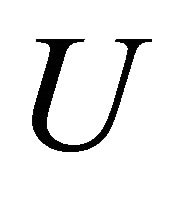 ,
, 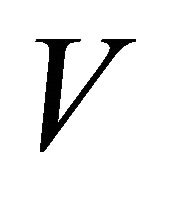 in
in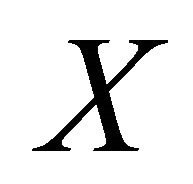 , there exists a positive integer
, there exists a positive integer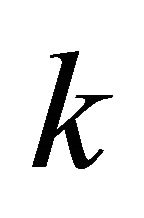 , such that
, such that  and
and  (
(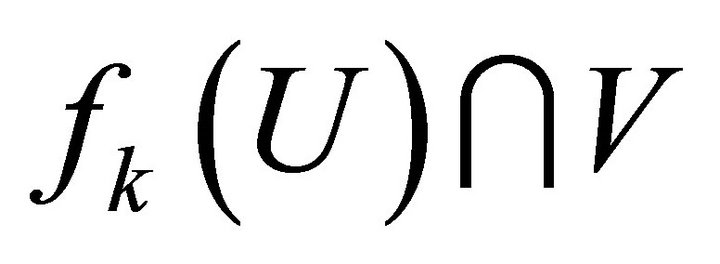
![]() and
and ), then the sequence of maps
), then the sequence of maps ![]() is said to be weakly mixing in iterative (successive) way.
is said to be weakly mixing in iterative (successive) way.
Definition 4.5 If for any non-empty open sets U and 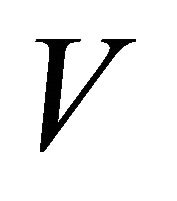 in
in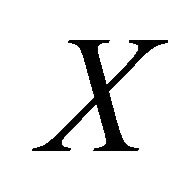 , there exists a positive integer
, there exists a positive integer  such that,
such that,

Then the sequence ![]() of maps is said to be mixing (on X) in the iterative or successive way.
of maps is said to be mixing (on X) in the iterative or successive way.
Definition 4.6 If for any non-empty open set 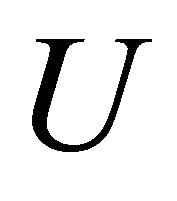 in
in , there exists a positive integer
, there exists a positive integer 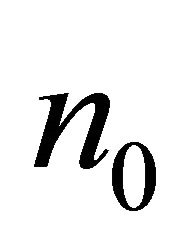 such that,
such that,

then the sequence ![]() of maps is said to be topologically exact (on
of maps is said to be topologically exact (on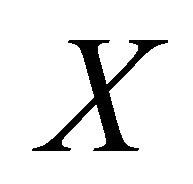 ) in the iterative or successive way.
) in the iterative or successive way.
It easy to see that that chaotic properties defined for a autonomous system (2) which is governed by the single map f on a metric space X, is a particular case for the chaotic properties defined for nonautonomous system (1) in successive way.
5. Main Results
Consider a compact metric space  and its setvalued extension
and its setvalued extension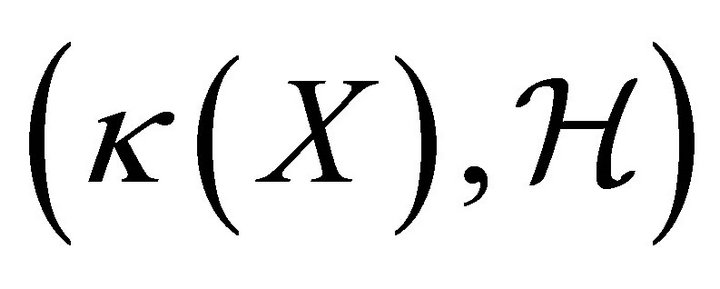 . Let
. Let ![]() and
and
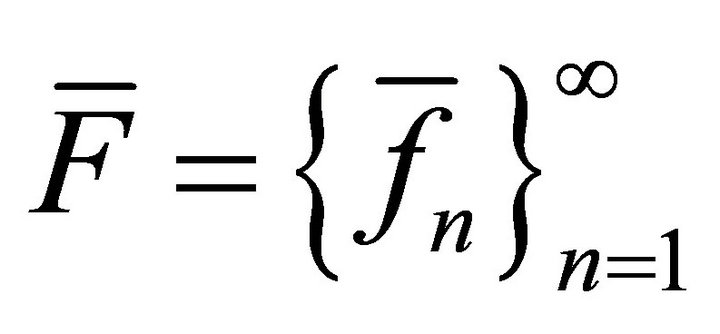 be the sequence of continuous maps representing the nonautonomous systems
be the sequence of continuous maps representing the nonautonomous systems 
and  respectively, where
respectively, where 
and  for all
for all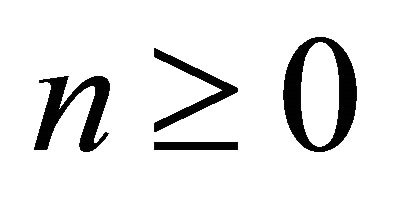 . Here we will take
. Here we will take 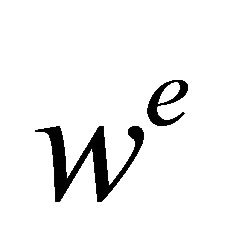 -topology on
-topology on 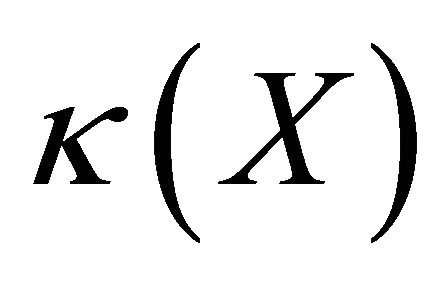 for proving all our results and examples.
for proving all our results and examples.
Theorem 5.1 Sequence of maps ![]() is transitivity in iterative (or successive) way on X iff
is transitivity in iterative (or successive) way on X iff
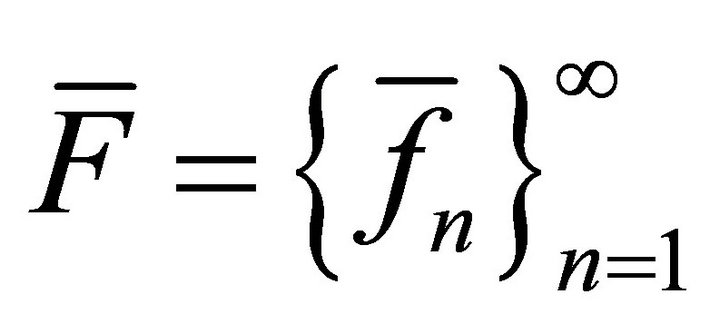 is transitive in iterative (or successive) way on
is transitive in iterative (or successive) way on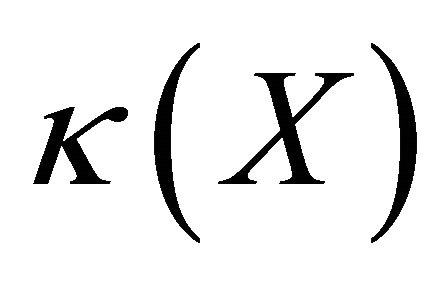 .
.
Proof. We will do the proof for iterative way, for successive way it would be similar.
Take a pair of non-empty open sets![]() ,
,
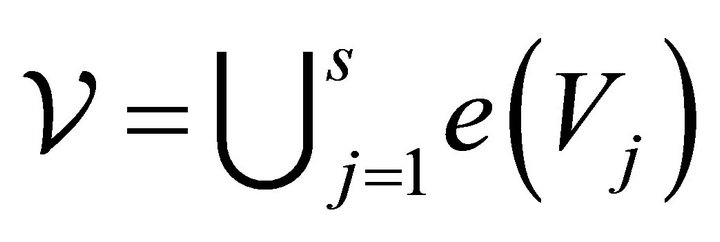 in
in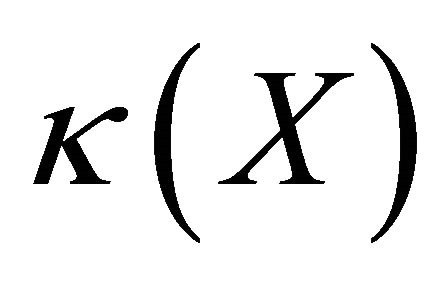 , where Ui,
, where Ui,  are open in X for
are open in X for  and
and  Fix
Fix 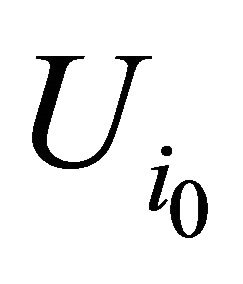 and
and 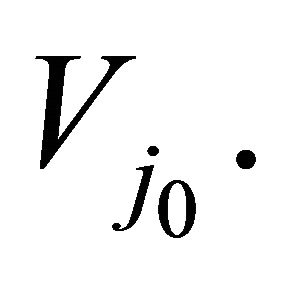 Since F is transitive in iterative way, we can find a
Since F is transitive in iterative way, we can find a 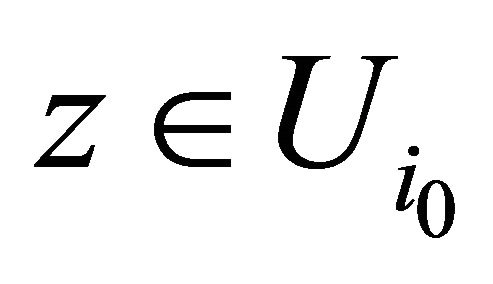 and
and 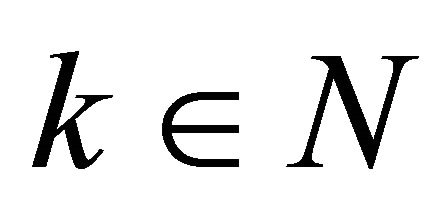 such that
such that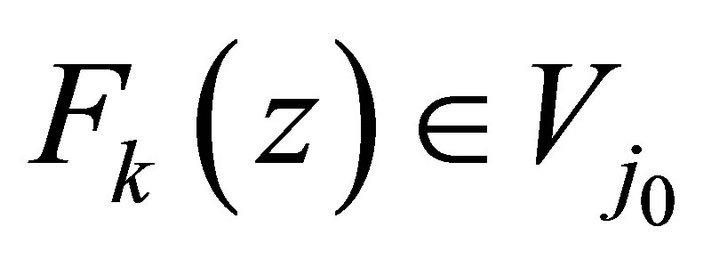 , implies
, implies
 , where
, where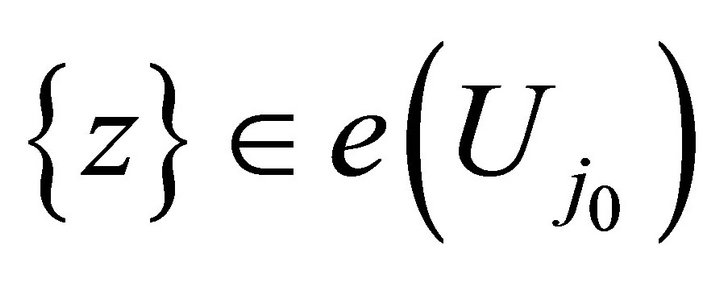 . Consequently,
. Consequently,
 .
.
Conversely, take a pair of non-empty open set U and V in X. Since X is compact, so for U open in X we can find a non-empty open set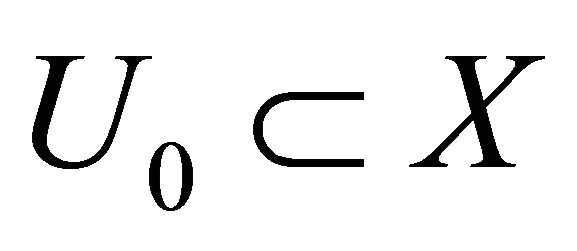 , such that
, such that 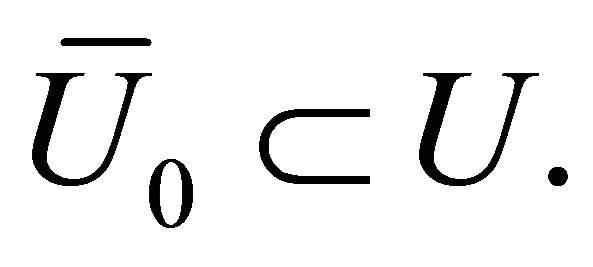 Clearly,
Clearly, 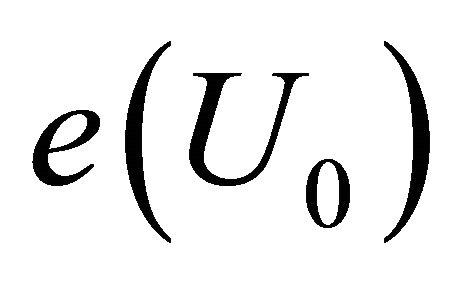 and
and 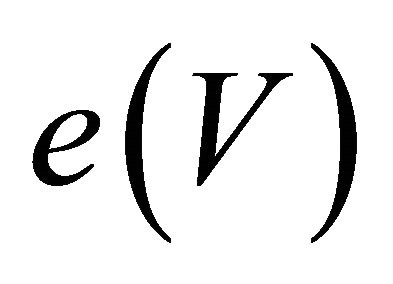 will be open and non-empty in
will be open and non-empty in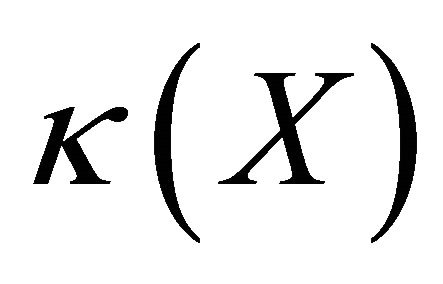 , there exist an positive integer
, there exist an positive integer 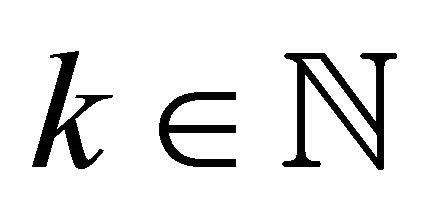 such that
such that , therefore,
, therefore,

Hence .
. 
Example 5.2 Consider the sequence of maps
![]() on the unit circle
on the unit circle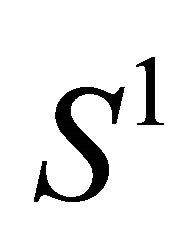 , defined as
, defined as
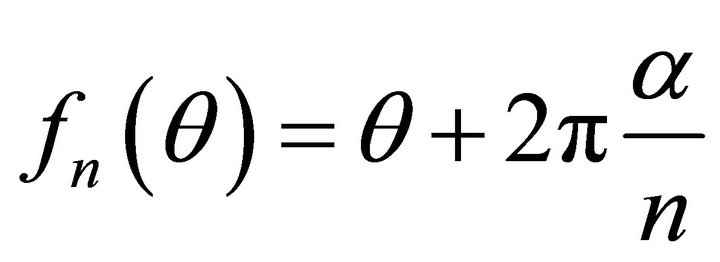 , for
, for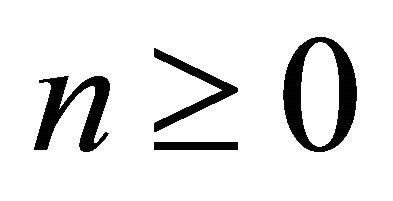 where
where  is an irrational.
is an irrational.
Then,
 . It is not difficult to prove that F is transitive in iterative way but not in successive way. Hence the sequence
. It is not difficult to prove that F is transitive in iterative way but not in successive way. Hence the sequence
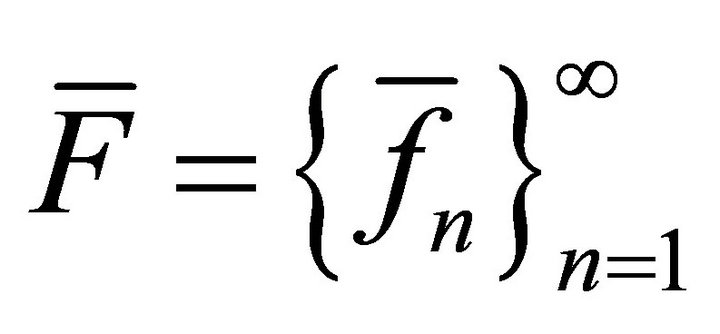 on
on 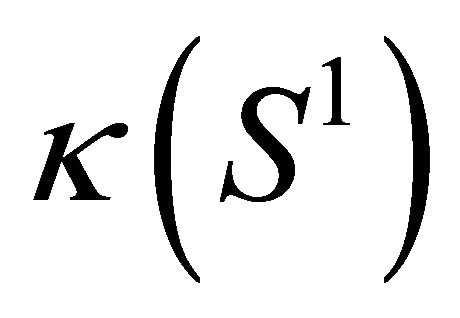 is transitive in iterative way but not in successive way (by Theorem 5.1).
is transitive in iterative way but not in successive way (by Theorem 5.1).
Theorem 5.3 The sequence of maps ![]() is topologically mixing in iterative (or successive) way on X iff
is topologically mixing in iterative (or successive) way on X iff 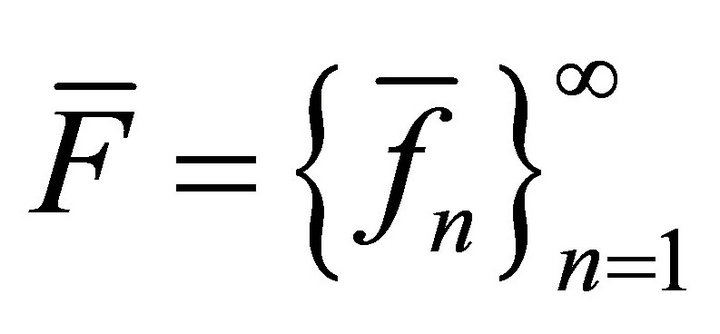 is topologically mixing in iterative (or successive) way on
is topologically mixing in iterative (or successive) way on .
.
Proof. The proof is similar to proof done for transitivity, with slight modifications.
Theorem 5.4 Let 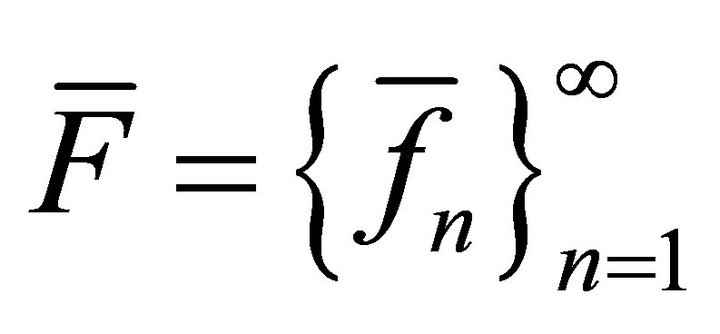 and
and ![]() be the sequences of continuous maps on
be the sequences of continuous maps on 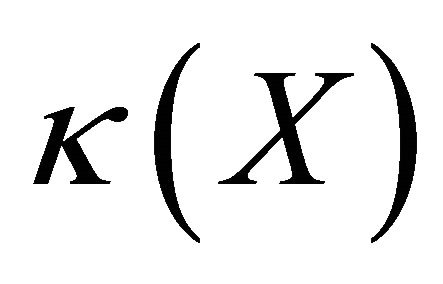 and
and  respectively. If
respectively. If 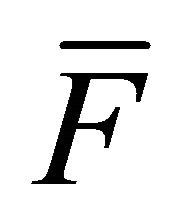 is sensitive in iterative (or successive) way, then
is sensitive in iterative (or successive) way, then  is sensitive in iterative (or successive) way.
is sensitive in iterative (or successive) way.
Proof. Let 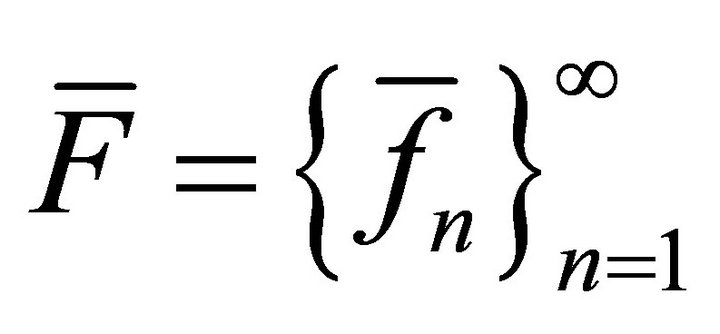 be sensitive in iterative waywith sensitive constant
be sensitive in iterative waywith sensitive constant 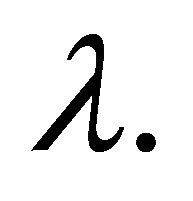 Let
Let 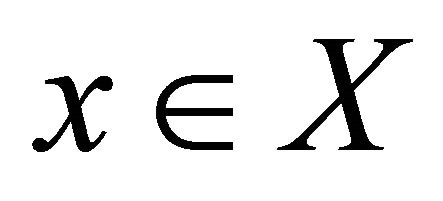 and
and 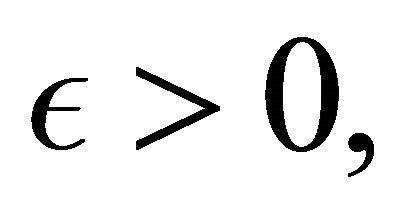 then as
then as 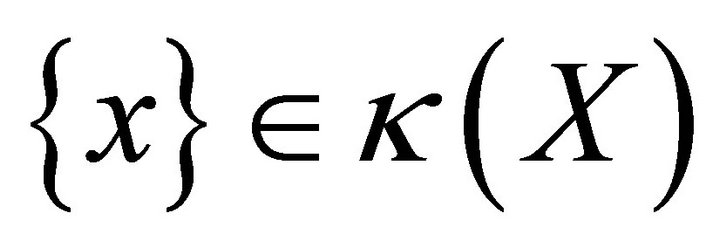 there exists
there exists  and
and
 such that
such that
 .
.
Since A is compact and 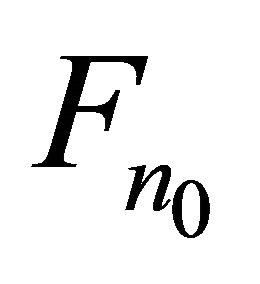 is continuous, we can find a
is continuous, we can find a 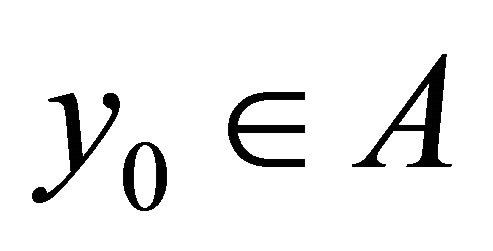 such that
such that . Clearly
. Clearly
 implies
implies , which implies
, which implies
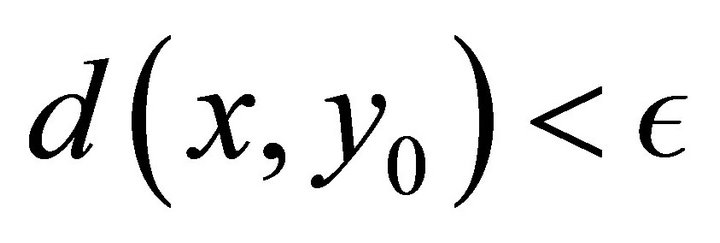 . Hence
. Hence 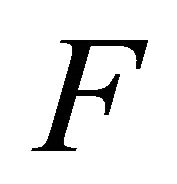 is sensitive in iterative way on
is sensitive in iterative way on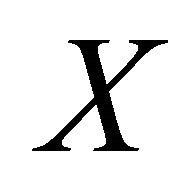 .
.
Similarty, we can prove it for successive way. 
Theorem 5.5 If ![]() has dense set of periodic points in iterative (or successive) way on X, then
has dense set of periodic points in iterative (or successive) way on X, then
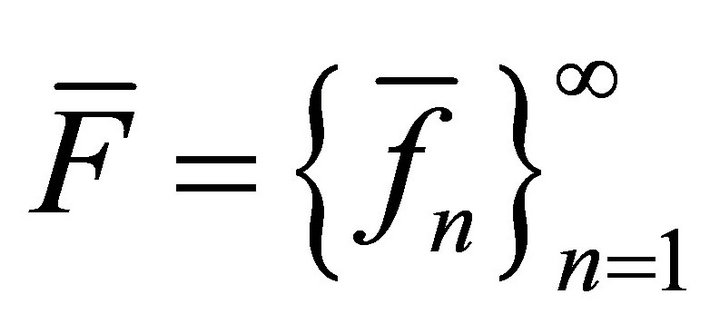 has dense set of periodic points in iterative (or successive) way on
has dense set of periodic points in iterative (or successive) way on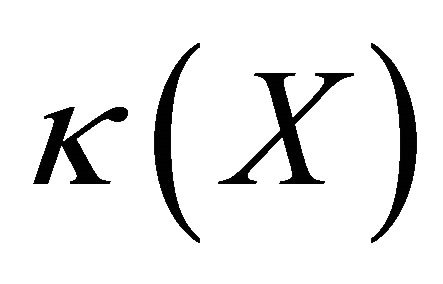 .
.
Proof. Let F has dense set of periodic points in successive way. Take any open set 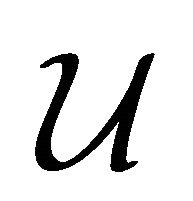 in
in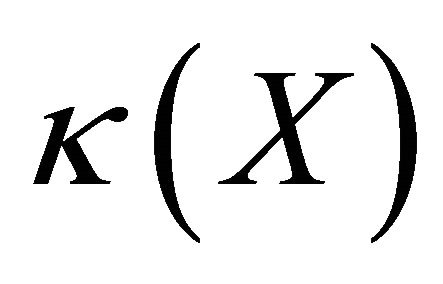 , then
, then
![]() , where
, where 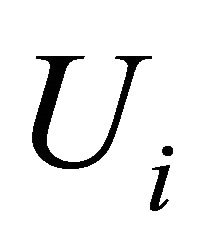 open in
open in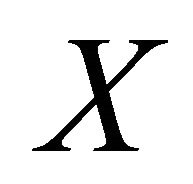 . There exists
. There exists
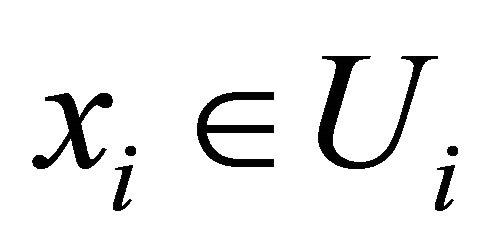 and a positive integer
and a positive integer 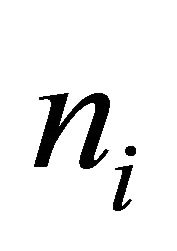 correspondingly, such that
correspondingly, such that  for
for ,
,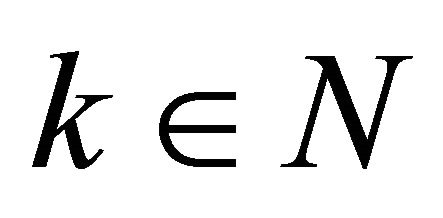 . Take
. Take
 and
and , then clearly
, then clearly 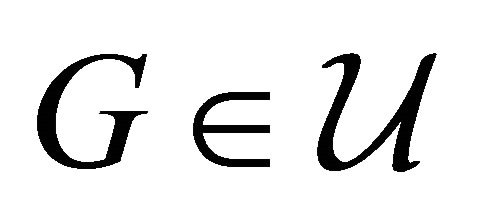 and
and , for all
, for all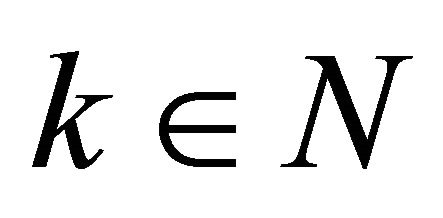 . Therefore,
. Therefore, 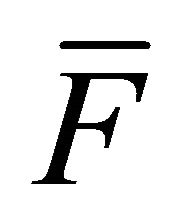 has dense set of periodic points on
has dense set of periodic points on 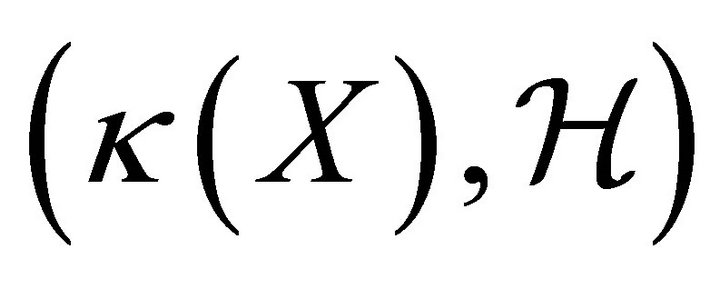 in successive way.
in successive way.
Proof in iterative way can be done likewise. 
Here we give an example where the nonautonomous dynamical system don’t have any periodic points in iterative (and successive) way but its set-valued extension has dense set of periodic points in successive way.
Example 5.6 Consider the sequence space,
 on two symbols. Let
on two symbols. Let ![]()
 ,
,  be any two elements of
be any two elements of![]() . Define distance between them as
. Define distance between them as 
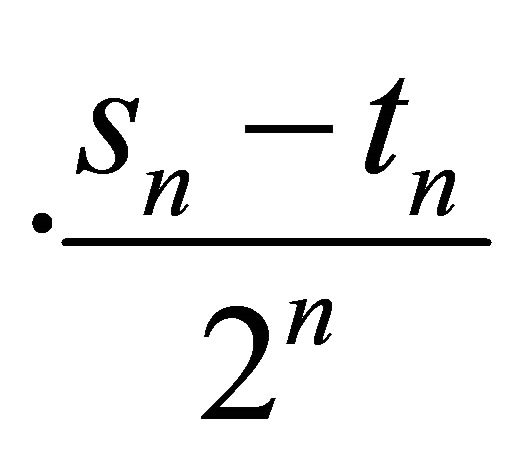 . It has been proved that
. It has been proved that 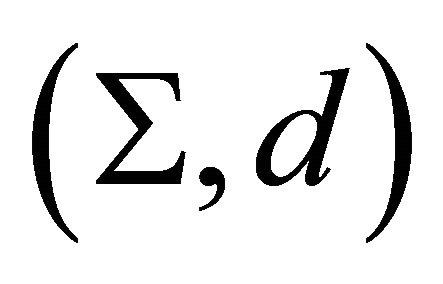 is a metric space.
is a metric space.
Define a binary composition of addition on elements of ![]() as
as
 where
where 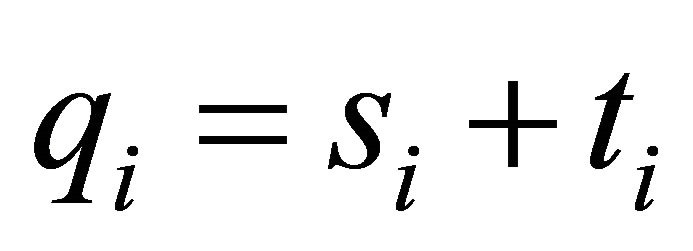 if
if , else
, else  and carry 1 to next position. With this composition
and carry 1 to next position. With this composition ![]() is a compact topological group.
is a compact topological group.
Consider a sequence of map ![]() on
on 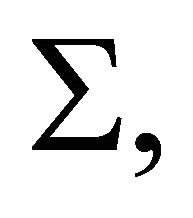 defined as
defined as
 where
where ,
, 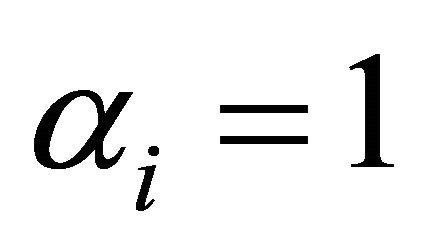 if
if , else 0.
, else 0.
 for all
for all 
It can be seen that P has no periodic points in iterative and successive way. Consider an open set  where
where 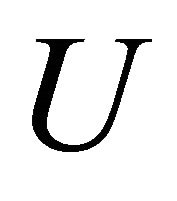 is open in
is open in 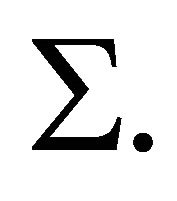 Since the cylinder set,
Since the cylinder set,

forms the basis for the topology on![]() , there exist
, there exist
 which is compact in
which is compact in 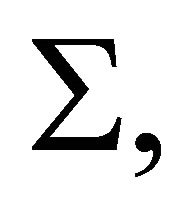 hence
hence
 . We can find a
. We can find a 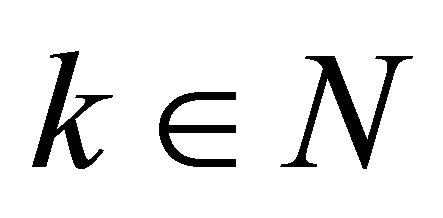 such that
such that
 Hence,
Hence, 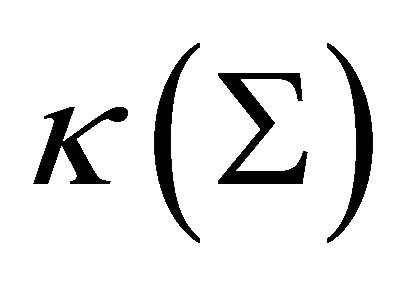 has dense set of periodic points in successive way.
has dense set of periodic points in successive way.
Theorem 5.7 The sequence of maps ![]() is weakly mixing in iterative (or successive) way iff
is weakly mixing in iterative (or successive) way iff
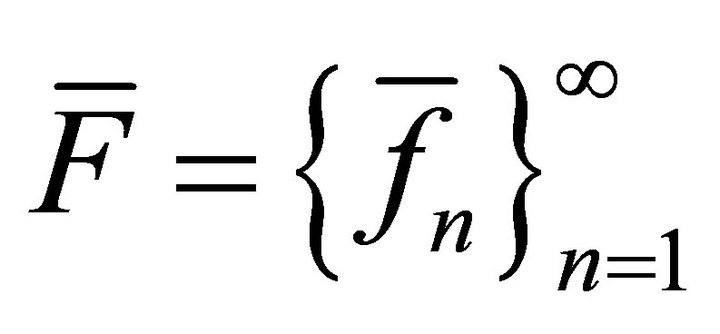 is weakly mixing in iterative (or successive)
is weakly mixing in iterative (or successive)
way.
Proof. Let F is weakly mixing in successive way on X. Consider a pair of non-empty open sets![]() ,
,
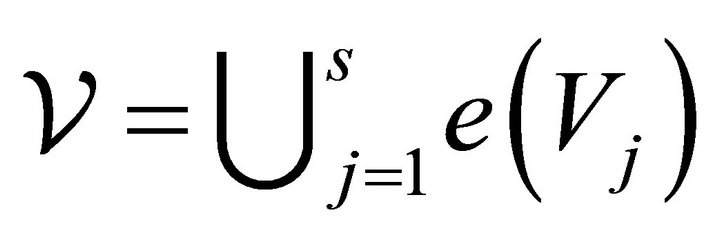 in
in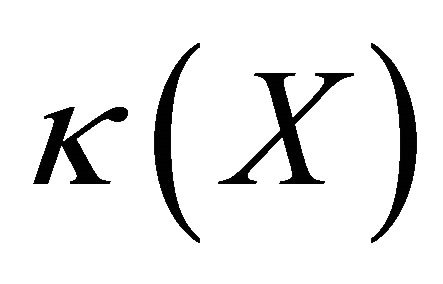 , where
, where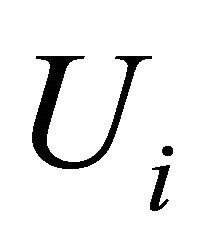 ,
, 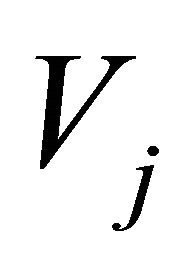 are open in
are open in
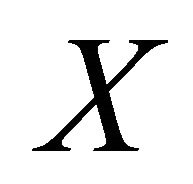 , for
, for  and
and  Fix
Fix 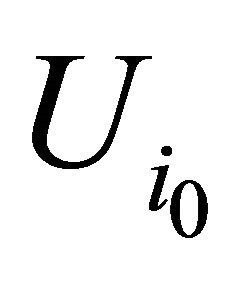 and
and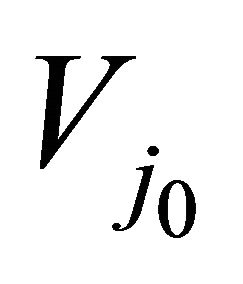 , therefore there exist an positive integer
, therefore there exist an positive integer  such that
such that  and
and  there exists
there exists 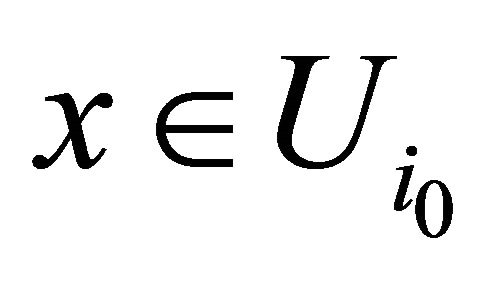 and
and  such that
such that 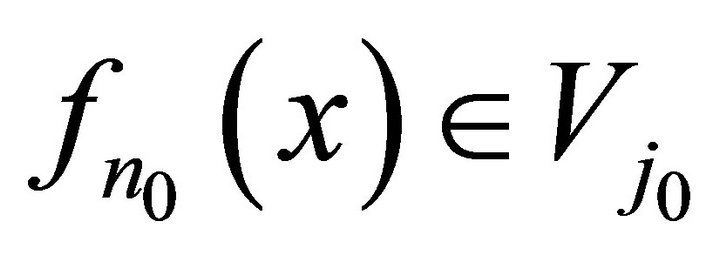 and
and
 So,
So, 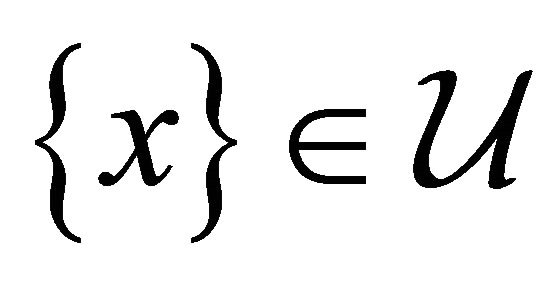 and
and 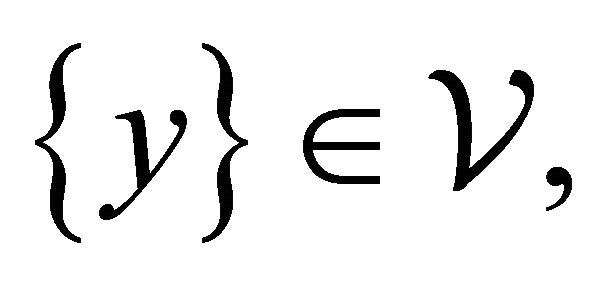 consequently implies
consequently implies 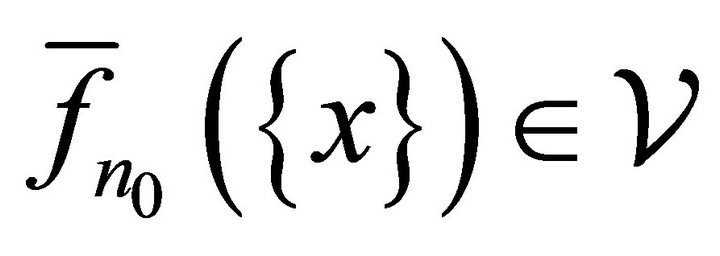 and
and 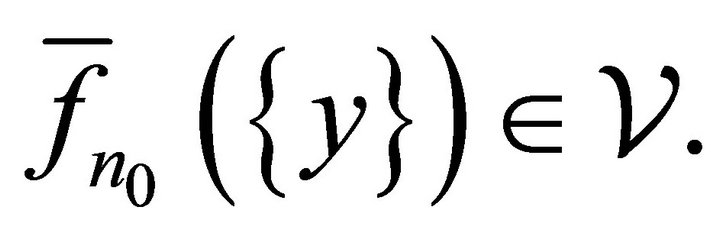
Conversely, suppose that 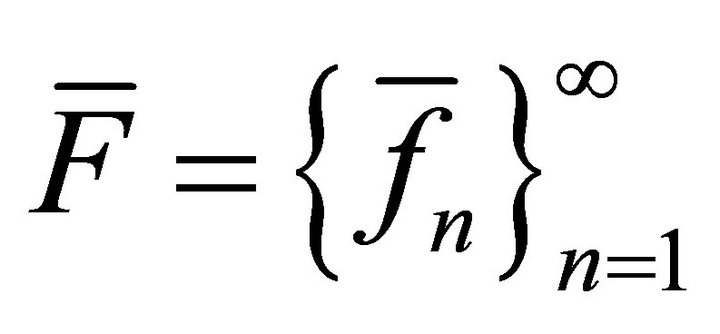 is weakly mixing in successive way. Take any pair of non-empty open sets
is weakly mixing in successive way. Take any pair of non-empty open sets 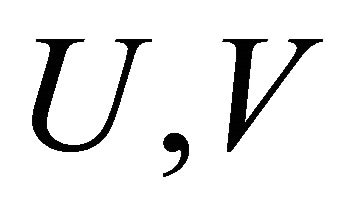 in
in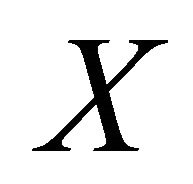 , then
, then 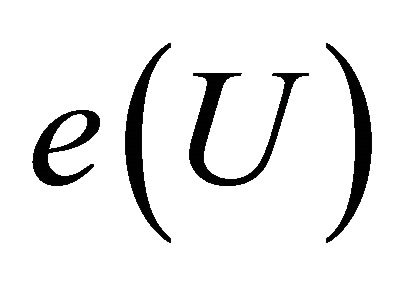 and
and 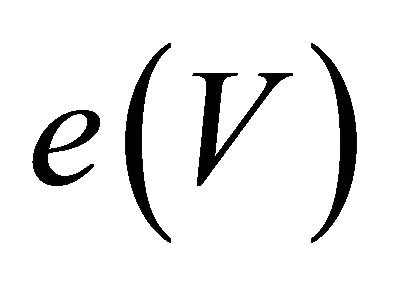 will be open in
will be open in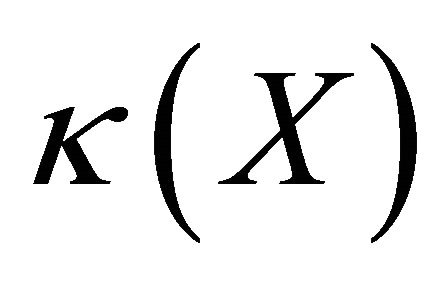 . We can find
. We can find 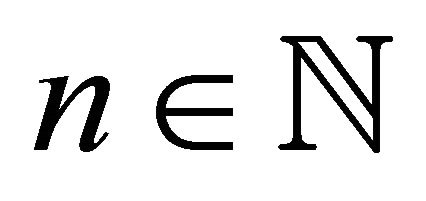 such that
such that 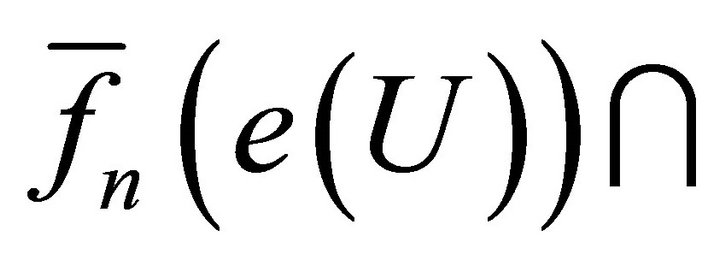
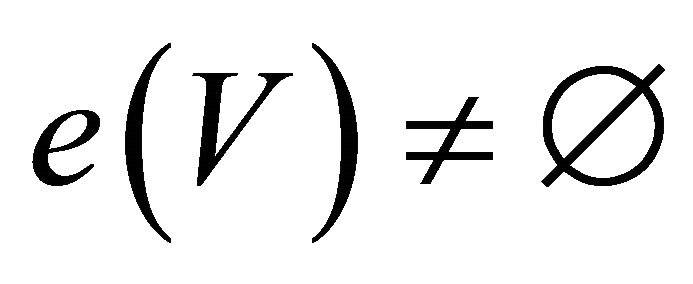 and
and  Now
Now

and

Hence  and
and 
The proof in iterative way can be done likewise. 
Theorem 5.8 The sequence of maps ![]() is topologically exact in iterative (or successive) way on X iff
is topologically exact in iterative (or successive) way on X iff 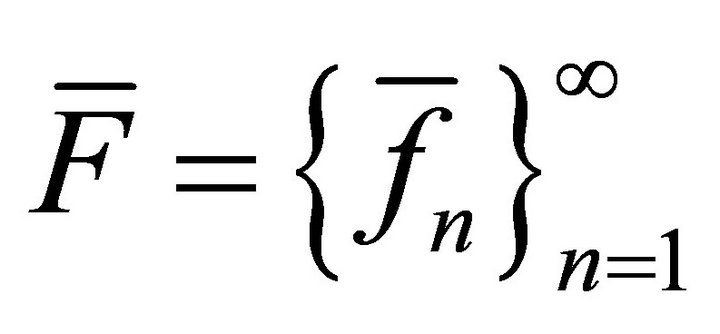 is topologically exact in iterative (or successive) way on
is topologically exact in iterative (or successive) way on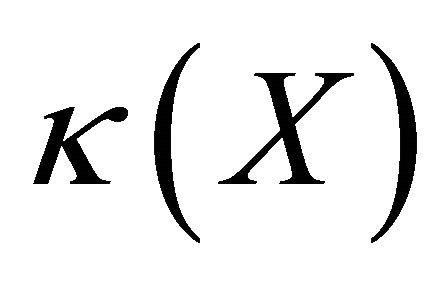 .
.
Proof. The proof is easy, hence omitted.
Example 5.9 Consider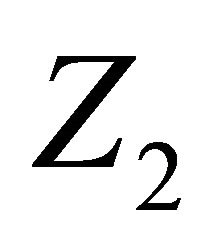 , the cycle group with two elements and discrete topology. Binary operation of addition (“+”) and subtraction (“–”) is defined under modulo 2. Let
, the cycle group with two elements and discrete topology. Binary operation of addition (“+”) and subtraction (“–”) is defined under modulo 2. Let . It is well Known that X is compact, perfect and has countable base containing clopen sets which can be chosen to consist of cylinder sets of the form
. It is well Known that X is compact, perfect and has countable base containing clopen sets which can be chosen to consist of cylinder sets of the form

Define a sequence of maps ![]() on X, as
on X, as
 , where
, where

It is clear that for every non-empty cylinder set ,
,

Therefore, F is topological exact in iterative way, clearly it can be seen that 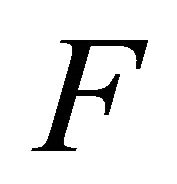 in not topological exact in successive way on X.
in not topological exact in successive way on X.
Hence, ![]() is mixing, weakly mixing, transitive in iterative way on
is mixing, weakly mixing, transitive in iterative way on 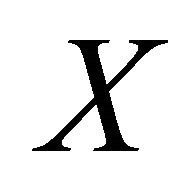 and so is
and so is  on
on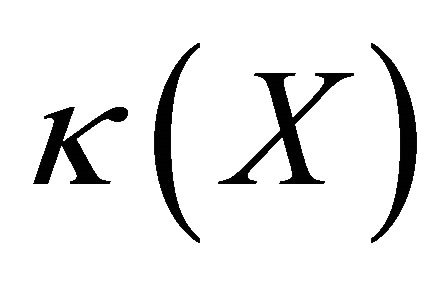 . Also, in every cylinder set we can find a sequence of repetitive block of symbols, which are periodic in successive and iterative way under F. It is not difficult to see that
. Also, in every cylinder set we can find a sequence of repetitive block of symbols, which are periodic in successive and iterative way under F. It is not difficult to see that 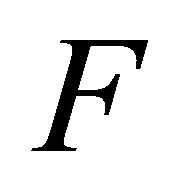 is sensitive with sensitivity constant
is sensitive with sensitivity constant![]() in iterative ways.
in iterative ways.
It is interesting to see that for any open set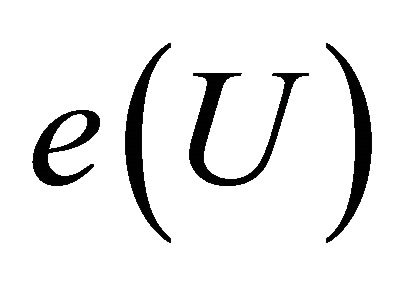 , there exists cylinder sets
, there exists cylinder sets  and
and
 in
in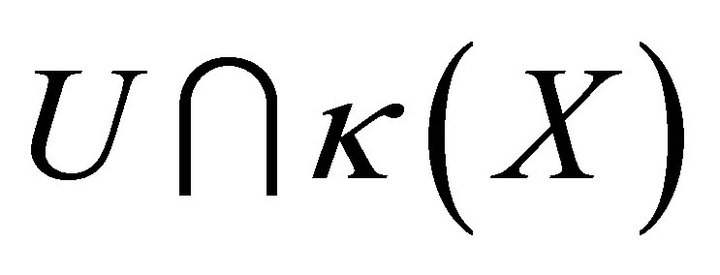 , where
, where
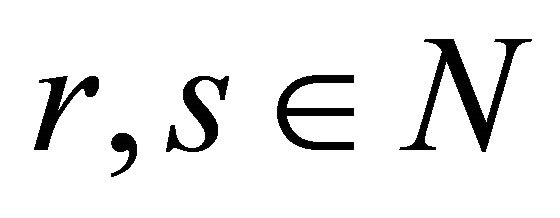 . We can always find a positive integer
. We can always find a positive integer 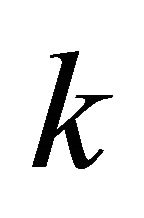 such that
such that , hence
, hence 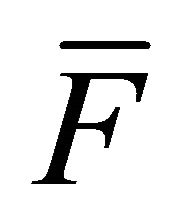 is sensitive on
is sensitive on
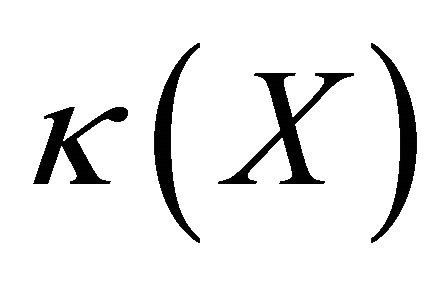 in iterative way.
in iterative way.
6. Conclusion
In this article we have studied some chaotic properties on time-varying map (i.e. a sequence of time-invariant maps). We have investigated the relation between
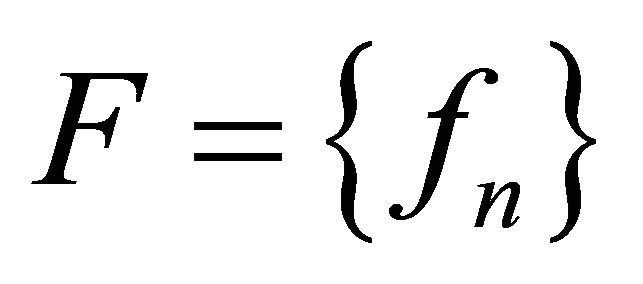 and
and 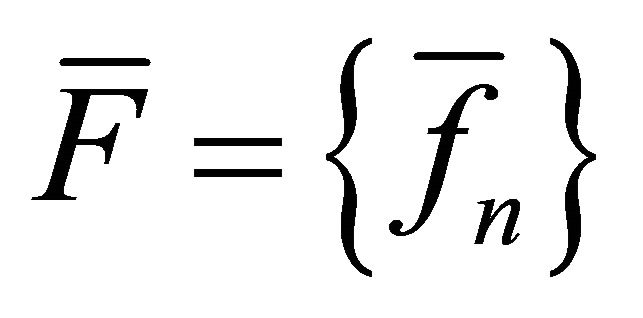 defined on X and
defined on X and 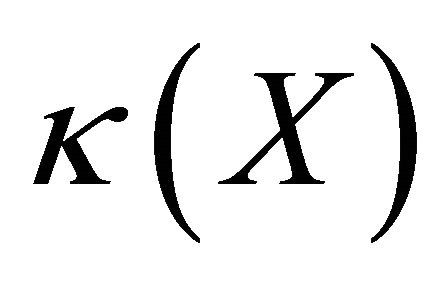 respectively, in the related chaotic dynamical properties such as transitivity, sensitivity, dense set of periodic points, weak mixing, mixing and topological exactness. In this endeavour, we proved that,
respectively, in the related chaotic dynamical properties such as transitivity, sensitivity, dense set of periodic points, weak mixing, mixing and topological exactness. In this endeavour, we proved that, 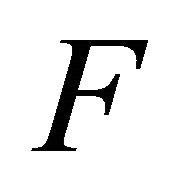 is transitive (weak mixing, mixing and leo, respectively) if and only if
is transitive (weak mixing, mixing and leo, respectively) if and only if 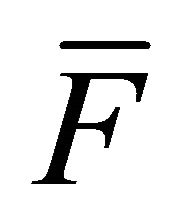
is so in iterative (successive) way. Also an example is given to prove that denseness of periodic points for 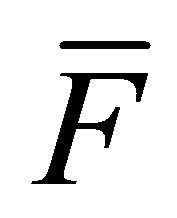 doesn’t imply the same for
doesn’t imply the same for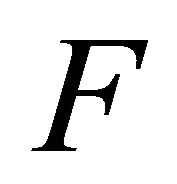 , in successive way. The question which is still open is, does sensitivity of
, in successive way. The question which is still open is, does sensitivity of 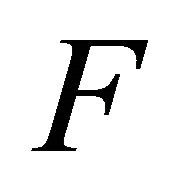 implies sensitivity for
implies sensitivity for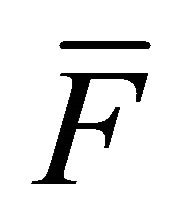 , which we think may not be possible in general, as for autonomous map sensitivity on original dynamical system doesn’t imply sensitivity on hyperspace dynamical system. These kinds of investigations would be useful in understanding the relationship between the dynamics of individual movement and the dynamics of collective movements for the time-varying map (i.e. a sequence of time-invariant maps).
, which we think may not be possible in general, as for autonomous map sensitivity on original dynamical system doesn’t imply sensitivity on hyperspace dynamical system. These kinds of investigations would be useful in understanding the relationship between the dynamics of individual movement and the dynamics of collective movements for the time-varying map (i.e. a sequence of time-invariant maps).
REFERENCES
- P. Touhey, “Yet Another Definition of Chaos,” American Mathematical Monthly, Vol. 104, No. 5, 1997, pp. 411- 414. doi:10.2307/2974734
- M. Vellekoop and R. Berglund, “On Intervals, Transitivity = Chaos,” American Mathematical Monthly, Vol. 101, No. 4, 1994, 353-355. doi:10.2307/2975629
- J. Banks, J. Brooks, G. Cairns, G. Davis and P. Stacey, “On Devaney’s Definition of Chaos,” American Mathematical Monthly, Vol. 99, No. 4, 1992, pp. 332-334. doi:10.2307/2324899
- S. N. Elaydi, “Discrete Chaos,” Chapman & Hall/CRC, Boca Raton, 2000.
- R. L. Devaney, “An Introduction to Chaotic Dynamical Systems,” 2nd Edition, Addision-Welsey, New York, 1989.
- C. Tian and G. Chen, “Chaos of a Sequence of Maps in a Metric Space,” Chaos, Solitons and Fractals, Vol. 28, No. 4, 2006, pp. 1067-1075. doi:10.1016/j.chaos.2005.08.127
- Y. M. Shi and G. R. Chen, “Chaos of Time-Varying Discrete Dynamical Systems,” Journal of Difference Equations and Applications, Vol. 15, No. 5, 2009, pp. 429-449. doi:10.1080/10236190802020879
- Y. M. Shi, “Chaos in Nonautonomous Discrete Dynamical Systems Approached by Their Subsystems,” RFDP of Higher Education of China, Beijing, 2012.
- P. Sharma and A. Nagar, “Topological Dynamics on Hyperspaces,” Applied General Topology, Vol. 11, No. 1, 2010, pp. 1-19.
- H. Roman-Flores and Y. Chalco-Cano, “Robinsons Chaos in Set-Valued Discrete Systems,” Chaos, Solitons and Fractals, Vol. 25, No. 1, 2005, pp. 33-42.
- J. Banks, “Chaos for Induced Hyperspace Maps,” Chaos, Solitons and Fractals, Vol. 25, No. 3, 2005, pp. 681-685. doi:10.1016/j.chaos.2004.11.089
- H. Roman-Flores, “A Note on Transitivity in Set Valued Discrete Systems,” Chaos, Solution and Fractals, Vol. 17, No. 1, 2003, pp. 99-104. doi:10.1016/S0960-0779(02)00406-X
- R. B. Gu and W. J. Guo, “On Mixing Properties in Set Valued Discrete System,” Chaos, Solitons and Fractals, Vol. 28, No. 3, 2006, pp. 747-754. doi:10.1016/j.chaos.2005.04.004
NOTES
*Corresponding author.

